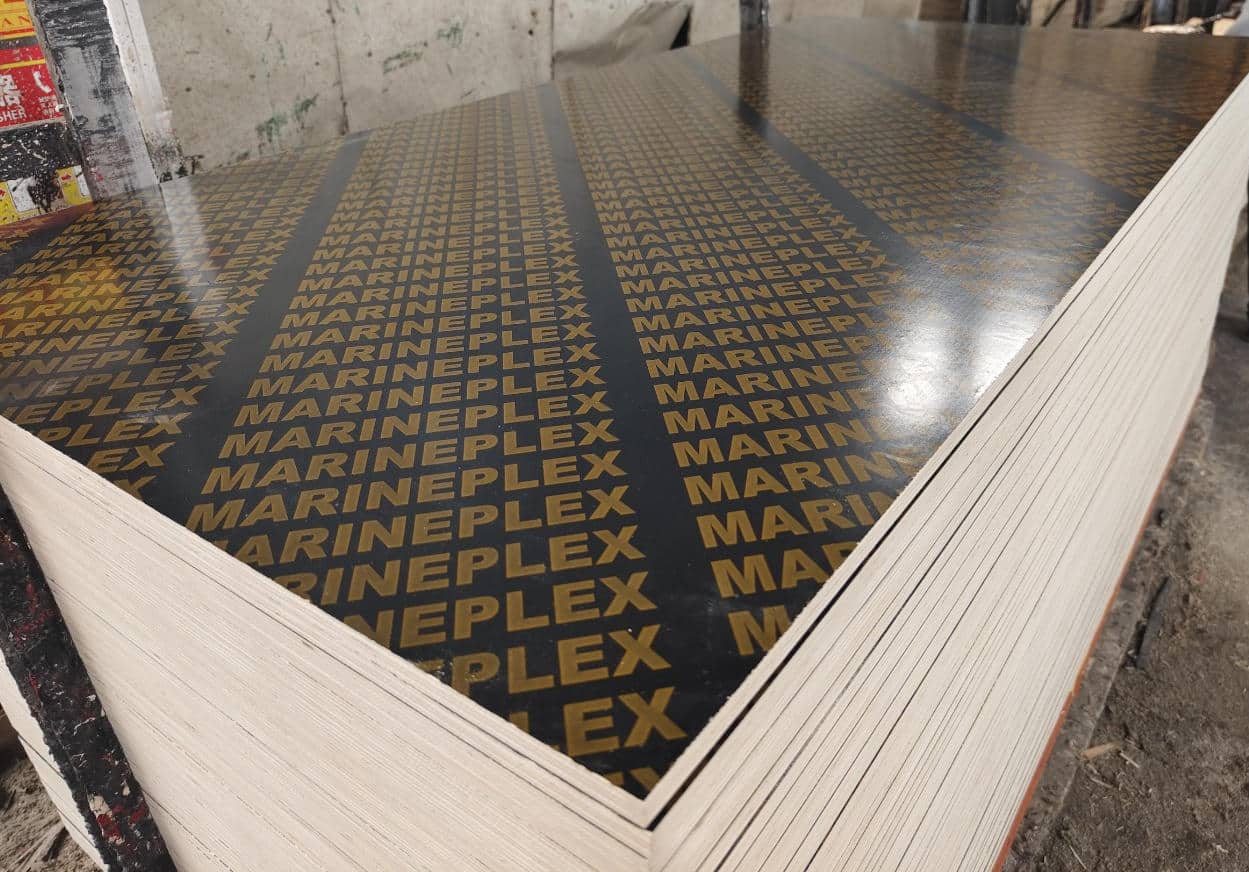In modern construction, film-faced plywood is a very common yet crucial building material. It acts as a silent “shaping expert,” providing a solid and reliable “mold cover” for concrete pouring.
From a structural perspective, film-faced plywood is not simply a layered composition of a single material, but rather a composite material formed by bonding multiple layers of veneer through scientific processing. These veneers are typically sourced from woods such as poplar, pine, and birch, which undergo preliminary treatment processes such as drying and degreasing to remove moisture and impurities from the wood, thereby preventing issues like warping or cracking caused by material instability during subsequent use. The veneers are then arranged in an alternating grain pattern and firmly bonded together through processes such as adhesive application and hot pressing, forming panels with a certain thickness and strength. This multi-layer, alternating structure design allows the panels to distribute pressure more evenly when subjected to force, significantly enhancing their overall load-bearing capacity.
Performance advantages are the key to the success of film-faced plywood in the construction industry. High strength and weather resistance are its “hard power.” When subjected to the immense pressure generated during concrete pouring, it maintains its shape steadily without bending or breaking. Even in outdoor construction environments exposed to wind, sun, and rain, its performance does not degrade rapidly, enabling it to adapt to various climatic conditions. Its excellent workability enhances its practicality. Construction workers can cut, trim, and assemble it according to the required building shapes, easily creating complex concrete formwork components such as beams, columns, and floor slabs to meet diverse construction needs. Additionally, it features a smooth surface, ensuring that concrete poured using it results in a flat and smooth surface, thereby reducing the workload for subsequent wall finishing and saving construction costs and time.
When selecting plywood for construction templates, several key points should be considered. First, examine the material. Different types of wood produce boards with varying performance characteristics, so selection should be based on the load-bearing requirements of the project and the usage environment. Second, inspect the bonding quality to ensure that the individual layers are securely bonded and that there are no signs of delamination or bubbling. Third, observe the surface flatness, as a smooth surface ensures the quality of concrete forming.
Currently, our company offers film-faced plywood in various quality grades to meet a wide range of construction needs. This includes black film-faced plywood, green PP film-faced plywood, etc. Please feel free to contact us if you have any purchasing needs.


